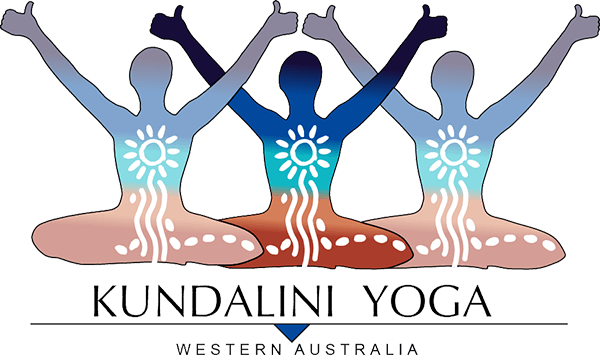
FREQUENTLY ASKED QUESTIONS
How is Kundalini Yoga different to other types of yoga?
In Kundalini Yoga the original strands of ancient yoga are brought back together. That means that from the very beginning we practice the physical postures and movements (asana) but also breathing (pranayama), deep relaxation and meditation. We also employ body locks (bhanda), hand positions (mudras) and angles with precise physical and energetic effects and sound yoga, including mantra (naad). The result is holistic, improving not just your physical health but also your overall state of mind and being.
A special aspect of Kundalini Yoga is that it is taught in complete sets of exercises called Kriyas. Individual exercises and variations of exercises are combined to work on a particular theme, the total effect of which is somehow more than the sum of its parts. In Kundalini Yoga there are more than 3000 different exercise sets and meditations, but there is a core of Kriyas which are counted as essential. Warm-up exercises draw from a stock of exercises to energise, open and loosen. The Kriya is always followed by a deep relaxation and a meditation.
Kundalini Yoga as taught by Yogi Bhajan is also underpinned by humanology teachings that are profound and wise as well as practically livable. Kundalini Yoga is a householder’s yoga – for people in the midst of life – and is extremely effective in improving your overall sense of well-being in a short period of time or in giving you teachings to live by. How deeply you go into it is of course entirely up to you.
What happens in a typical Kundalini Yoga class?
In Kundalini Yoga classes we work with exercise sets, called Kriyas. These are completely self-contained, specially put-together series of exercises and meditations. Each exercise can be practiced alone, but the real effect comes from the combination of exercises together, making a total which is greater than the sum of its parts. Kriyas work, for example, on particular muscle and organ groups, glandular and hormonal systems or on mental themes like for example fear or dependencies.
Every Kundalini Yoga class as taught by Yogi Bhajan follows a pattern in which it is taught all over the world: we begin by tuning in with a mantra in which we bow down to the inner teacher in all. Through this we open an internal and external space which brings us into contact with our inner self and creates a protected environment for our practice. We then do some warm-up exercises followed by a Kriya (exercise set). There are Kriyas for the spine, the individual organs, hormone and glandular system and also for mental/emotional themes like strengthening intuition, defeating insecurities, strengthening self-esteem, healing sleep-disturbances and much much more. After this comes the deep relaxation, in which you can fully let go and relax, followed by a meditation to integrate the effects of the Kriya you´ve just done. Most of the time the meditation relates to the theme covered in the Kriya. Finally, we close the session with a song and the seed mantra of Kundalini Yoga – Sat Nam.
What is Kundalini?
“Kundalini” is synonymous with the life force within all living things, also described as the potential energy of the soul – an aspect that develops consciously in Kundalini classes. In fact it is all our innate potential and inner possibilities. This energy lies dormant at the base of the spine, coiled up like a sleeping snake, and can be awoken to rise up and infuse the body and whole being with awareness and vibrancy, to unfold sleeping possibilites. ‘Kundalini’ also refers to, in Sanskrit, a curl of hair. This energy is in fact part of daily life and is awoken naturally in various ways eg. through feeling inspired by music or even by a really great conversation. It is not difficult to raise the Kundalini but the challenge is to hold and integrate it once it has risen.
Kundalini Yoga as taught by Yogi Bhajan works on awakening and channelling this primal creative energy while simultaneously strengthening the nervous system, endocrine (glandular) system, muscle and organ systems. This means that the life force, consciousness and vitality can gradually and systematically be increased and at the same time be integrated.
Is Kundalini Yoga dangerous?
There is amongst some people a certain myth that Kundalini Yoga can be dangerous. This was perhaps sparked by certain books that have come out describing disturbing experiences with kundalini awakenings after meditating for hours and days on a candle, for example, but these were certainly not brought about by the systematic practice of Kundalini Yoga. It is possible (and perhaps even more and more common as our planetary energy changes) to have sudden kundalini energy awakenings which can throw one into considerable crisis if unprepared. In this sense, it is in fact more dangerous not to do Kundalini Yoga than it is to do it, in that the practice thoroughly prepares you for a gradual and integrated experience. Of course, if you still feel concerned, ask your teacher.
Kundalini Yoga as taught by Yogi Bhajan works on awakening and channelling this primal creative energy while simultaneously strengthening the nervous system, endocrine (glandular) system, muscle and organ systems. This means that the life force, consciousness and vitality can gradually and systematically be increased and at the same time be integrated.
Do I have to be flexible to be able to do yoga?
There are no gold medals to win in yoga, rather the opportunity to lose your pride and shame. While physical flexibility is not really important, through regular practice, depending on your age, constitution and overall state of health, your flexibility will improve, sometimes dramatically. Even as an absolute beginner, you can experience the effect of the exercises on the body directly and immediately. Ultimately, yoga is above all also an inner exercise in which your own commitment to be fully present with your whole being is more important than being able to wrap your legs behind your head!
Kundalini Yoga as taught by Yogi Bhajan works on awakening and channelling this primal creative energy while simultaneously strengthening the nervous system, endocrine (glandular) system, muscle and organ systems. This means that the life force, consciousness and vitality can gradually and systematically be increased and at the same time be integrated.
I don't consider myself to be a spiritual person. Can I do Kundalini Yoga anyway?
There is nothing religious about Kundalini Yoga, but it is an invitation to a spiritual practice, meant to connect you with your own spirit. The word Yoga means “union” and also “to yoke”, so it is about unifying and yoking together body, mind… and spirit. In Kundalini Yoga the spirit aspect is made explicit and is given a langauge. So if this is what you want, you have come to the right place! As in all things, direct experience is your best guide.
In Kundalini Yoga we use mantras to tune in at the beginning and to close at the end of each class, as well as for some meditations and also internally during exercises if you choose to. Mantras are sacred syllables and sounds which go beneath our own somewhat elaborated language to effect us on a deep, atomic level to bring on relaxation, healing and mental clarity, but these will always be explained to you as to their meaning and significance and you are encouraged to form your own relationship with them based on your own experience. Ask your teacher.
Finally, Kundalini Yoga as taught by Yogi Bhajan is rooted in the tradition of Sikhism and so our mantras are from this tradition and the practice of Kundalini Yoga is suffused with the special spirit of these teachings. Some people with time find themselves drawn to learn more, others not. All ways are valid.
Kundalini Yoga as taught by Yogi Bhajan works on awakening and channelling this primal creative energy while simultaneously strengthening the nervous system, endocrine (glandular) system, muscle and organ systems. This means that the life force, consciousness and vitality can gradually and systematically be increased and at the same time be integrated.
Why do you wear a head covering in Kundalini Yoga?
As teachers of Kundalini Yoga we are encouraged to wear a head covering. This is to protect the sensitive crown chakra, which is particularly open during teaching. It is also to direct attention to the crown as the closest part of the body to the Infinite.
You do not have to do this to practice Kundalini Yoga. Some people find with time that they too feel like doing so, but again, it is totally an individual choice and not necessary for getting powerful benefits from practice.
Why do we wear white in Kundalini Yoga?
Again, this belongs to the practice of being a Kundalini Yoga teacher and is given as a recommendation when you do your training. In a way, it almost a kind of uniform that we choose to wear. As with all things connected to yogic practice, this has reasons connected to subtle physiology which ancient yogis understood. In this case, white, as the “colour” that contains all colours, is relaxing to wear and gives the wearer a sense of purity and lightness. It is said to expand the wearer´s aura! The material should be as natural as possible, so as to not charge up the electro-magnetic field of the wearer. Once again, this is something to test with your own experience.
When should I or shouldn´t I practice yoga?
Generally there are no criteria that would exclude you from yoga. It is, however, important for the teacher to know if you are pregnant, or have any physical complaints or injuries, since there are certain exercises which should be avoided by people with particular conditions. Many complaints, physical or mental/emotional complaints can be reduced through yoga, if not completely removed.
With pregnancy or even menstruation, there are certain exercises, including breathing exercises, that may be altered or avoided. It is always useful to check with your health practitioner your specific condition so that you are better able to understand how certain movements or postures may impact on your body.
In the case of acute illness, if you have an infection of some kind where your pulse is faster than normal it may be advisable to wait until the acute phase passes before beginning yoga again. In fact, yoga is a powerful tool for deflecting illness in its early stages or speeding up the recovery process, once the acute phase has passed. If you are unsure in any way, see a doctor or health practitioner.
What is Yoga?
The word Yoga derives from the Sanskrit yugit, meaning ‘to connect’. So what is connected in Yoga? We live in a world of polarities, of opposites: man – woman, plus – minus, yin – yang, good – bad, you – me, macro – micro-cosmos etc. The invitation in yoga is to connect these polarities. Where does this happen? In the place where all opposites originate: namely, in yourself. This is where masculine and feminine meet, where the finite, limited “I” meets with the infinite, unlimited “I”. That is yoga.
In this way, yoga means unity and harmony. It is also an ancient collection of experiences and realisations about our body, mind and spirit, with the aim of bringing these three aspects into harmony. Through yoga we develop our natural abilities and inner possibilities, which can lead us to healing and wholeness.
To do this we work with the principle of tension and relaxation: complete relaxation follows conscious tension. This is a natural law, just as every inhale must follow an exhale.
